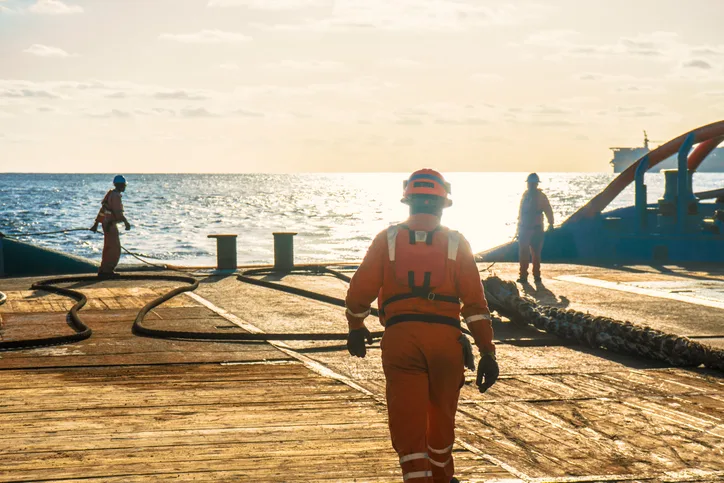
Taking care of commercial ships isn’t just hard work — it’s essential for the safety of everyone on board and required by law. Dry docking, the process of taking a vessel out of the water for thorough inspection, cleaning, and critical repairs, is key to keeping ships safe and seaworthy.
But as any dockmaster knows, dry dock sites are some of the most dangerous workplaces in the maritime industry, packed with heavy equipment, towering scaffolding, pressurized systems, and confined spaces that can quickly turn deadly.
When companies cut corners on top of that — delaying or skimping on dry docking to protect their profits or pressuring harbor workers to rush critical repairs — it’s often the crew, longshoremen, and shipyard workers who suffer the consequences.
At Zehl & Associates, we’ve secured the #1 record-setting maritime and longshoreman injury verdicts and settlements in the country by holding the largest maritime companies fully accountable. We know safety can never be sacrificed, and we fight relentlessly to protect the lives and futures of those who work on the water.
What Is Dry Docking?
Dry docking a boat involves removing a vessel from the water. Doing this allows crews to assess parts of the boat that are typically submerged, such as:
- Propellers
- Hull
- Rudders
These parts are inaccessible during regular operations. While underwater repairs and maintenance are possible in some instances, that approach does not provide the same level of visibility and ease of access as dry docking.
Dry docking a boat is not only important, but insurance standards and certain maritime regulations often require it. The goal is to keep vessels seaworthy and safe.
Why Dry Dock Boats?
Every few years, commercial vessels need to be dry-docked. The frequency is set by various federal and international organizations. Most commercial ships have to be dry-docked every 2–5 years. However, there are exceptions. Vessels that carry passengers or certain hazardous materials may have to be dry-docked more often.
When ships are taken out of the water, maintenance crews have a chance to:
- Remove marine growth that causes drag and fuel inefficiency
- Inspect and repair the hull or any damaged parts
- Test valves, seals, and other safety systems
- Recoat the hull with anti-fouling paint
The scope of work performed during dry docking will vary based on what maintenance crews discover and the type of vessel involved.
Common Dry Docking Safety Risks
Shipyard workers and crew members involved in repairs during dry dockings may encounter several safety concerns, such as:
- Falls from heights during hull inspections or scaffolding work
- Crush injuries
- Exposure to hazardous materials
- Fires caused by welding or cutting in poorly ventilated areas
- Slip and trip hazards in wet or greasy work zones
Unfortunately, these risks can sometimes lead to workplace accidents or even death. When that occurs, it’s vital for injured parties and their loved ones to hold at-fault parties accountable. Doing so may protect others from future incidents and promote a safer work environment.
Dry Docking Procedure and Types
OSHA reports that catastrophic accidents during dry docking are unlikely as long as proper procedures are followed. One of the most important steps is to choose the appropriate type of dry dock to lift or cradle the vessel out of the water. Some options are:
- Graving docks
- Floating docks
- Syncrolifts
- Slipways
During dry dock operations, workers who are operating in slippery areas, enclosed spaces, or at heights should wear proper safety equipment, which may include a harness that is tied off to an approved structure.
Falls and entrapment in enclosed spaces are two of the biggest concerns during any dry dock maintenance.
Regulations That Govern Dry Docking Safety
OSHA regulates shipyards and dry-docking. These regulations cover everything from fire protection and hazard communication to the use of scaffolding. Additionally, the American Bureau of Shipping sets classification standards for vessel maintenance.
These rules ensure dry docks and inspections are performed at the correct intervals.
What Happens When Dry Docking Goes Wrong?
Workers involved in dry-docking ships often work long hours and engage in physically intense labor. They also operate in confined spaces. All of these factors can increase the risk of injury. Injured parties have to seek justice quickly. Prompt action can impact the value of a claim and give injured parties a chance to seek justice.
The best approach is to proactively reduce the risk of injuries by being aware of the risks involved. A little knowledge and foresight go a long way in staying safe and keeping shipyards accountable.
To learn more and get help, call Zehl & Associates to schedule a free consultation.
Contact the Undefeated Houston Maritime Accident Lawyers from Zehl & Associates Injury & Accident Lawyers for Help Today, Call 1-888-603-3636
For more information, please contact our Undefeated Maritime accident attorneys in Houston, Texas at Zehl & Associates Injury & Accident Lawyers to schedule a free consultation today.
We proudly serve Harris County, Midland County, and throughout the state of Texas. We are located in Houston and Midland and throughout the state of Texas:
Zehl & Associates Injury & Accident Lawyers – Houston
2700 Post Oak Blvd #1000, Houston, TX 77056
(888) 603-3636
Open 24 hours

Zehl & Associates Injury & Accident Lawyers – Midland
306 W Wall St Suite 701, Midland, TX 79701
(432) 220-0000
Open 24 hours